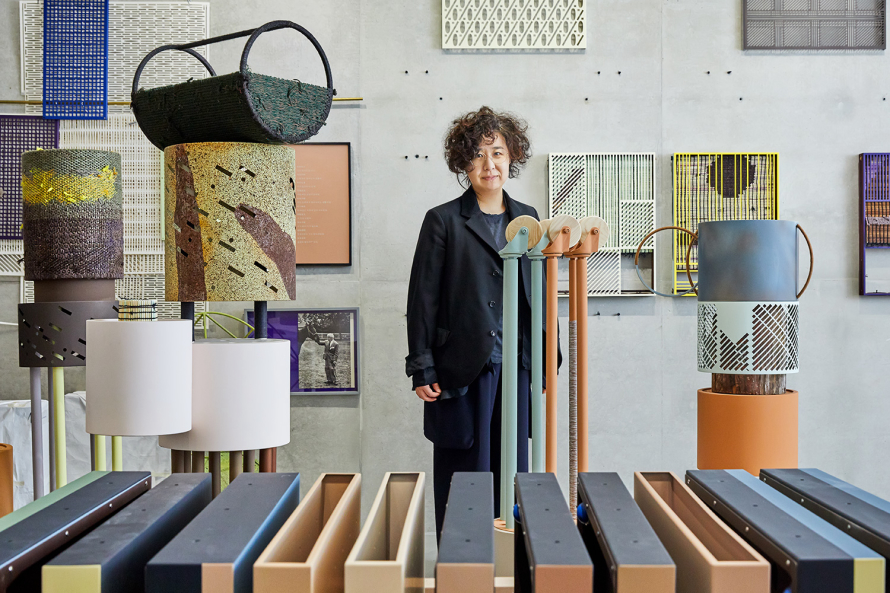
To depict her own visionary landscapes, Suki Seokyeong Kang re-interprets the centuries-old True-View method of Korean landscape painting. Coined in the 18th century, True-View was notable for disembarking from imaginative Chinese stylization in order to depict nature more realistically. “When I learned that skill, it related more to my body for building the truth,” she says. “I translate the view in my work as a function for rebuilding the truth of now, rather than depiction.”
Landscape painting is a funny focus for an artist who assembles landscapes out of sculptural paintings. Embracing archaic Korean traditions of restraint from her own education—the square musical notation of Jeongganbo, a time-unit box system for visual memory, or the solo royal court dance choreography Chunaengmu (meaning dance of the spring oriole)—Kang’s shows articulate how individuals relate to physical space and memory’s not-solinear relationship to time.
“Suki Seokyeong Kang: Black Mat Oriole,” the artist’s 2018 debut US museum show at the ICA Philadelphia, changes when it travels—enabling Kang to, as co-curator Kate Kraczon puts it, “reify her terminology.” Subtly rooted in the traditions of her home, the rotating cast of works, both discrete and part of a whole, is primed for exporting international iterations. First shown in the Gwangju Biennale in 2016, Black Mat Oriole has since morphed into her Land Sand Strand series, also shown in 2018, at the Liverpool Biennial and again at this year’s Venice Biennale.
The dichotomy on display is exquisite—mismatched, but structured; fragmented yet harmonious; grand and intimate. Meticulously frayed edges of finely woven mats feature subtly adjacent shades of black or deep blues. Holes puncture painted steel. In Mora, stacks of paintings, each having previously hung on walls, now pile up like palates, their canvas rims dripping crisscrossed colors in dialogue with the interweave of her textiles. Pieces on poles evoke the domestic ubiquity of floor lamps. Props on wooden cart wheels recall droids or robots. A three-channel video realizes their latent potential in real time. Currently showing at Mudam Luxembourg is a new iteration of the artist’s Grandmother Tower series—elegantly hunched sculptural portraits, corporeal in assembly, honoring the stubborn stoicism of elegant women late in life.
Standing on mats, performers’ movements are blocked, quite literally, inside of and on top of her work. Working with local dancers at the Shanghai Biennale, community members from various backgrounds at the Tensta Konsthall in Sweden, and most recently, students from the Gallerie dell’Accademia in Venice, Kang refrains from calling her notations a dance.
“I use the term ‘activation.’ To activate their bodies, to activate with my work, to activate their space, to activate their future. People don’t have to follow notations too perfectly. It’s more about thinking about your body inside of this space.”
By opening activations up to each community, individuals form a landscape, moving through the installation together, experiencing their own histories within it. This convergence of autonomous moments builds a communal respect. Repetition within spatial limitation and orientation can stick with an audience after movement has ended. The now becomes the future. Returning home, every step recollects prior boundaries through residual muscle memory.
There is a vein of humor in Kang’s reverence for these time-honored traditions that she always somehow manages to subvert, upend or internalize, which should come as no surprise. Kang moonlights as a professor of traditional Korean painting at Ewha Womans University in Seoul. Fittingly, she opens “Square See Triangle” at the Buk-Seoul Museum of Art Children’s Gallery in October. This practically meta show elucidates her practice in didactic terms and includes an accompanying children’s book.



